
Honda HR-V 4x4 (2015-2020) interior, tech and comfort
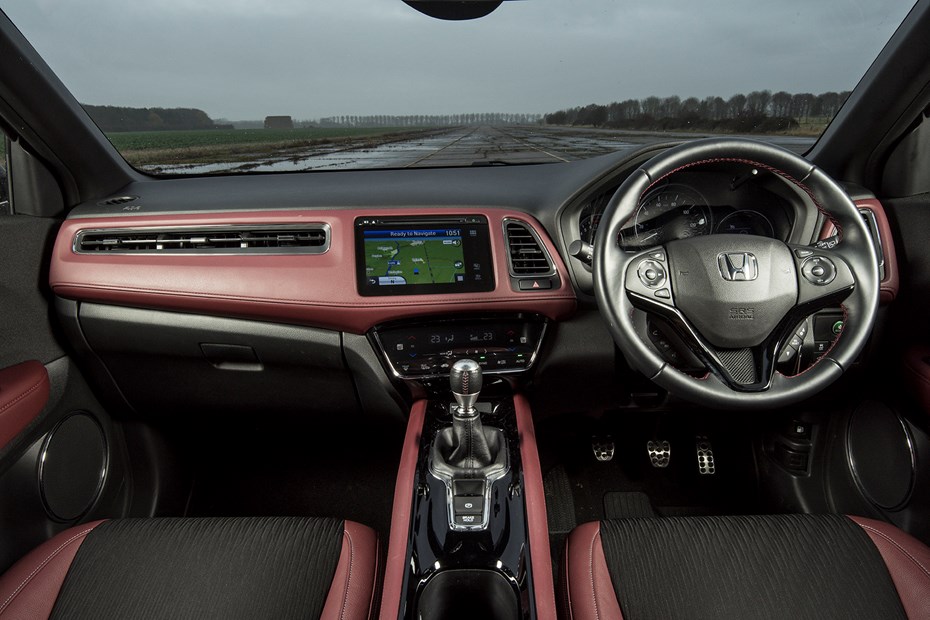
After a period of producing dashboards that look functional but uninspiring, or at first glance appear haphazardly arranged, the Honda HR-V’s interior is a welcome breath of fresh air.
Or in the front passenger’s case, a welcome breeze of climate-controlled air out of the full-width vent strip that faces them.
The cabin is spacious, airy and offers a comparable amount of space inside as its largest rivals, thanks to a clever layout that maximises interior space for passengers and luggage.
The whole dash is much more homogenous in design, with crisp, clear instrumentation, an upper panel that’s angled conveniently towards the driver featuring the 7.0-inch infotainment Honda Connect touchscreen above and a ‘Smart Touch’ climate control panel below.
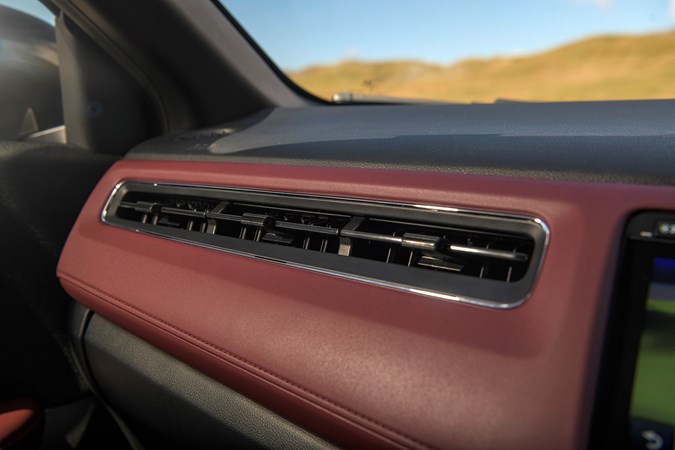
This leads onto a high-mounted centre console that brings the controls closer to hand, which makes the cabin feel a little more cosy, but certainly not cramped.
There’s a commanding view of the road ahead and the driving position feels well-judged. The only aspects we’d ask for is more adjustment for the driver’s seat, as it feels a little like it’s tipping you forward slightly. The lowest setting may still be a little too high for taller drivers, but this is a minor point – the steering wheel obscuring the top of the speedometer, depending on your seating position, may be more of a nuisance.
As the HR-V has been on sale since 2015, the cabin does feels a little old in terms of design and technology.
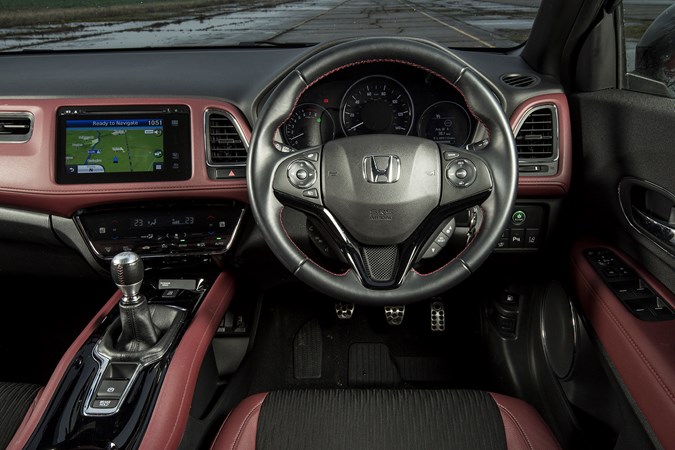
The driver’s dials are the biggest giveaway – while some rivals give the option of a digital high-definition screen, such as the virtual cockpit you’d find on a Skoda Kamiq, the HR-V continues to use traditional dials – which is fine by us – combined with a small dot matrix display on the right-hand side of the dials. There’s a trip computer here, but it’s low-rent and won’t display any sat-nav instructions.
.jpg)
At least the speedometer has a funky green-lit surround to indicate how economical the driver is being, as this gradually changes to a white colour when being driven too hard.
Our main gripe is that despite being a revised version of the Honda Connect package, it still manages to look decidedly aftermarket and isn’t as sophisticated in its integration as systems found in competitors’ cars. Operationally it’s fine at best, with the touchscreen being slow to respond by today’s standards, and the Garmin sat-nav delivering unambiguous instructions. There’s also no Apple CarPlay or Android Auto, an irritating omission, as it’s now present on both the CR-V and Civic.
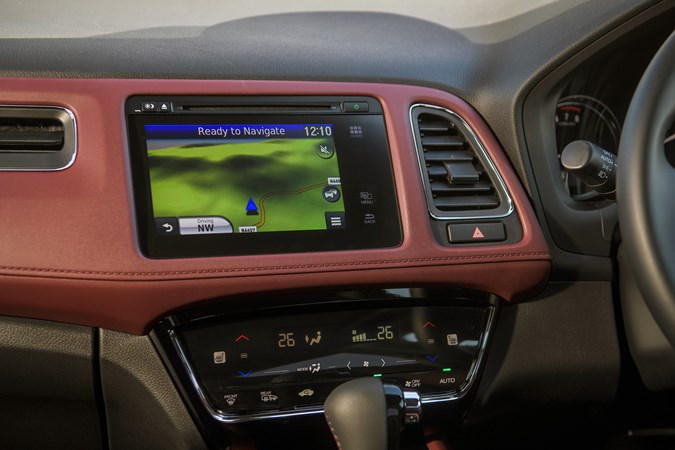
Fit and finish felt to be of a high standard on test, with the quality of the materials feeling superior to those employed in the Qashqai – the doors close with a reassuringly solid thunk, too.
Comfort
There’s little point comparing Honda HR-V comfort levels to its predecessor which disappeared from price lists a decade ago. It was a different interpretation of how to do ‘crossovers’, whereas the market’s moved on significantly since 2005.
With plenty of directional adjustment for both the seat and steering wheel, getting comfortable in the Honda HR-V shouldn’t pose any issues.
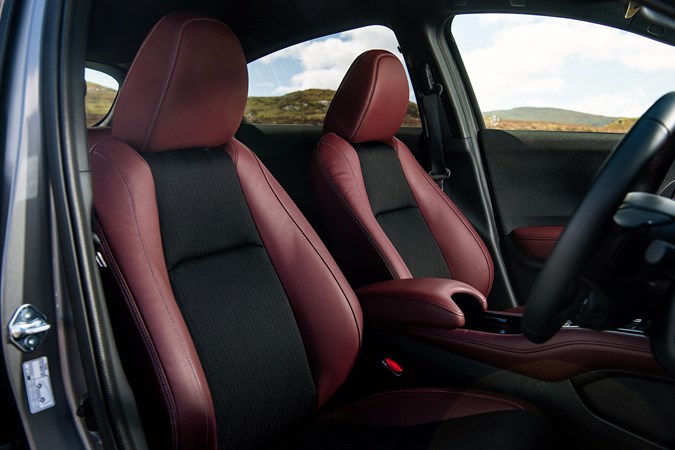
You feel confident sat higher up relative to other cars, giving a commanding view of the road ahead – large door mirrors ensure you can see clearly behind you too, although you’re aided by parking sensors (and a reversing camera on SE and EX models) when manoeuvring around car parks.
The ride quality has improved over the years, being supple and forgiving over road imperfections, with even the Sport model only being noticeably firm over larger bumps.
Earlier models of the HR-V missed out on the cossetting ride normally associated with SUVs, so if you are looking to buy used, it’s worth keeping this in mind. We’d recommend testing one on a longer drive to make sure it suits, with the entry-level S model on 16-inch alloy wheels feeling superior to any other model.
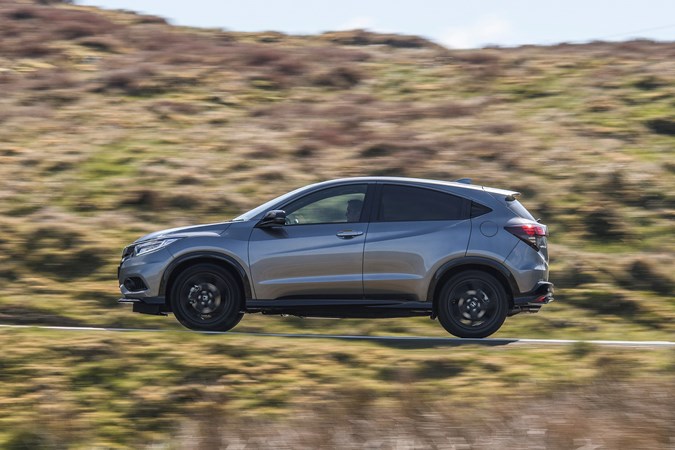
Those with larger wheels were fine but tended to transmit a greater degree of vibrations from minor road ripples through to the occupants’ behinds if the surface became less than perfect.
Elsewhere the HR-V experience is generally a quiet one, but this is one key area where some newer rivals will perform better.
All the engines settle down into the background and remain hushed when cruising at a constant speed, but the level of noise intruding into the cabin varies depending on which one you go for.
The diesel is disappointingly noisy at idle and sounding coarse at low revs even if it does quieten down considerably at higher speeds.
The entry-level 1.5-litre is better but still becomes vocal when you need to work it hard, just to gain momentum.
The 1.5-litre turbocharged petrol is by far the most pleasant, sounding throaty in the cabin when you want to. While this isn’t strictly necessary in a practical family car, it’s still enough of a reminder that you’ve paid extra for the nicer engine. It’s hushed otherwise.
What all HR-Vs suffer from, though, is a high level of road noise. The Sport is the most susceptible, due to the larger 18-inch wheels, but you’ll have to raise your voice to maintain a conversation at motorway speeds in all models.
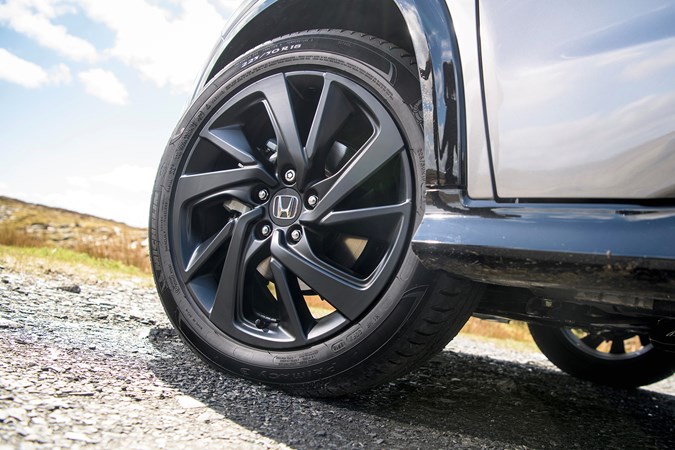


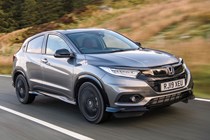
.jpg)
.jpg)
.jpg)
.jpg)
.jpg)
.jpg)
.jpg)
.jpg)
.jpg)
.jpg)
.jpg)
.jpg)
.jpg)
.jpg)
.jpg)
.jpg)
.jpg)
.jpg)
.jpg)
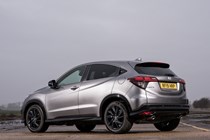

.jpg)
.jpg)
.jpg)
.jpg)
.jpg)
.jpg)
.jpg)
.jpg)

.jpg)

.jpg)
.jpg)
.jpg)
.jpg)
.jpg)
.jpg)
.jpg)
.jpg)
.jpg)
.jpg)
.jpg)
.jpg)
.jpg)
.jpg)
.jpg)
.jpg)
.jpg)


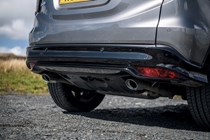
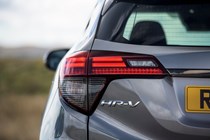


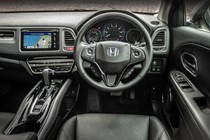
.jpg)
.jpg)
.jpg)
.jpg)
.jpg)
.jpg)
.jpg)
.jpg)
.jpg)
.jpg)
.jpg)
.jpg)
.jpg)
.jpg)
.jpg)
.jpg)
.jpg)
.jpg)
.jpg)
.jpg)
.jpg)
.jpg)
.jpg)
.jpg)
.jpg)
.jpg)
.jpg)
.jpg)
.jpg)
.jpg)
.jpg)
.jpg)
.jpg)
.jpg)
.jpg)
.jpg)
.jpg)
.jpg)
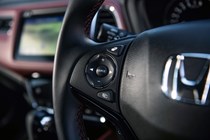

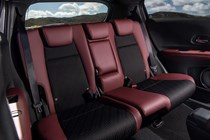

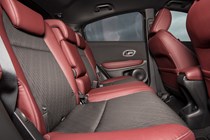
.jpg)
.jpg)
.jpg)
.jpg)
.jpg)
.jpg)
.jpg)
.jpg)
.jpg)
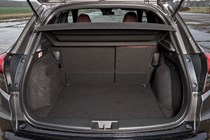
.jpg)
.jpg)
.jpg)
.jpg)
.jpg)
.jpg)
.jpg)
.jpg)
.jpg)
.jpg)

.jpg?quality=50)
.jpg?quality=50)
.jpg?quality=50)
.jpg?quality=50)
.jpg?quality=50)
.jpg?quality=50)
.jpg?quality=50)
.jpg?quality=50)
.jpg?quality=50)
.jpg?quality=50)
.jpg?quality=50)
.jpg?quality=50)
.jpg?quality=50)
.jpg?quality=50)
.jpg?quality=50)
.jpg?quality=50)
.jpg?quality=50)
.jpg?quality=50)
.jpg?quality=50)


.jpg?quality=50)
.jpg?quality=50)
.jpg?quality=50)
.jpg?quality=50)
.jpg?quality=50)
.jpg?quality=50)
.jpg?quality=50)
.jpg?quality=50)

.jpg?quality=50)

.jpg?quality=50)
.jpg?quality=50)
.jpg?quality=50)
.jpg?quality=50)
.jpg?quality=50)
.jpg?quality=50)
.jpg?quality=50)
.jpg?quality=50)
.jpg?quality=50)
.jpg?quality=50)
.jpg?quality=50)
.jpg?quality=50)
.jpg?quality=50)
.jpg?quality=50)
.jpg?quality=50)
.jpg?quality=50)
.jpg?quality=50)







.jpg?quality=50)
.jpg?quality=50)
.jpg?quality=50)
.jpg?quality=50)
.jpg?quality=50)
.jpg?quality=50)
.jpg?quality=50)
.jpg?quality=50)
.jpg?quality=50)
.jpg?quality=50)
.jpg?quality=50)
.jpg?quality=50)
.jpg?quality=50)
.jpg?quality=50)
.jpg?quality=50)
.jpg?quality=50)
.jpg?quality=50)
.jpg?quality=50)
.jpg?quality=50)
.jpg?quality=50)
.jpg?quality=50)
.jpg?quality=50)
.jpg?quality=50)
.jpg?quality=50)
.jpg?quality=50)
.jpg?quality=50)
.jpg?quality=50)
.jpg?quality=50)
.jpg?quality=50)
.jpg?quality=50)
.jpg?quality=50)
.jpg?quality=50)
.jpg?quality=50)
.jpg?quality=50)
.jpg?quality=50)
.jpg?quality=50)
.jpg?quality=50)
.jpg?quality=50)





.jpg?quality=50)
.jpg?quality=50)
.jpg?quality=50)
.jpg?quality=50)
.jpg?quality=50)
.jpg?quality=50)
.jpg?quality=50)
.jpg?quality=50)
.jpg?quality=50)

.jpg?quality=50)
.jpg?quality=50)
.jpg?quality=50)
.jpg?quality=50)
.jpg?quality=50)
.jpg?quality=50)
.jpg?quality=50)
.jpg?quality=50)
.jpg?quality=50)
.jpg?quality=50)